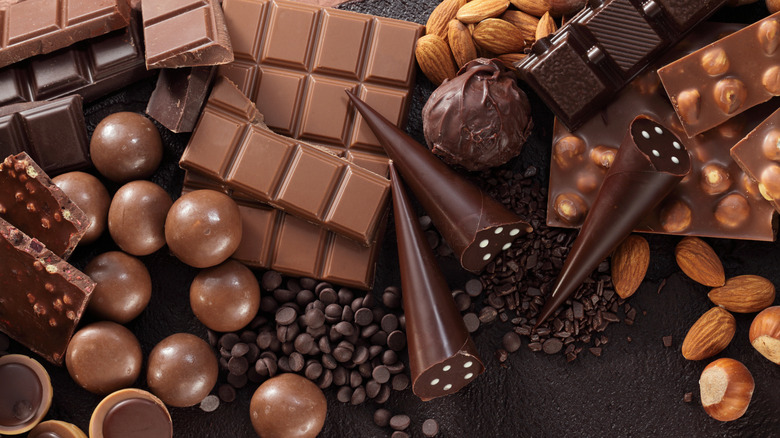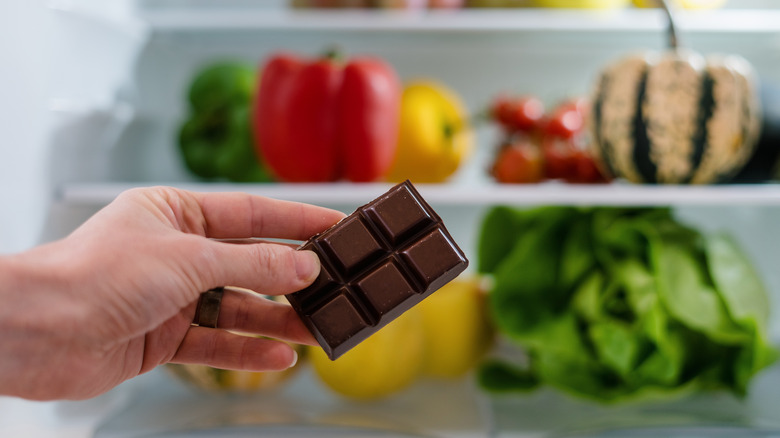How To Store Your Chocolate For The Best Flavor
True chocolate lovers may find themselves devouring an entire serving of the decadent, delicious treat in a single sitting, but for those who end up with leftovers — or are stocking up for future recipes and snacking — what's the best way to ensure the sweet stays in top condition? In reality, the best storage conditions for chocolate are relatively simple, and temperature is the most critical factor.
Chocolate should be kept in the 65-70 degrees Fahrenheit range with moderate to low humidity and away from direct sunlight. That means most ordinary kitchen cabinets or pantries should be suitable as long as your chocolate is sealed or otherwise protected from moisture. Under these conditions, milk chocolate remains at its best for about a year, while dark chocolate lasts roughly twice as long. While it has some important differences in composition from milk and dark chocolate, white chocolate should also be stored the same way. However, it has a shorter shelf life due to the higher dairy and sugar content and is best used within six months.
Some prefer a chillier storage alternative
While many say you should never store chocolate in the fridge, the reality is a bit more complicated. There's no denying that if your chocolate isn't sealed properly, moisture in the refrigerator (or anywhere else) can affect the texture and appearance of chocolate. It can also absorb strong flavors or odors from other items in your fridge. That said, because temperature is the essential factor in preserving your chocolate, if you're somewhere where you're unable to keep it in the proper temperature range without help it's okay to toss it (properly sealed) in the fridge.
As with many things people love (and people do love their chocolate), not everyone agrees with this chocolate storage consensus. Famous chocolate maker Cadbury sparked debate with its advice on storing chocolate, which closely adhered to the guidance for keeping chocolate at a moderate temperature and away from moisture. However, some argued that any chocolate not consumed immediately should instead be stored in the freezer, which some chocolatiers say can increase the lifespan of the sweet by 50%. Those who choose to freeze their chocolate should tightly seal it first. Then, before using, thaw the chocolate in the fridge. This prevents any undesirable changes from rapidly developing moisture that can form on frozen chocolate that is immediately brought to room temperature.
With these simple principles, bakers, confectioners, and chocolate fans everywhere can ensure they enjoy their purchases in the best condition possible.

